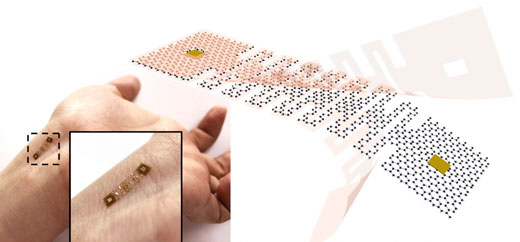Nanowerk October 22, 2019
To make a material resistant to damage from the stress and strains of the human body’s natural movement researchers at the University of Illinois applied kirigami architectures to graphene to create sensors suitable for wearable devices. They put the active sensing element on an “island” between two “bridges” made from kirigami graphene. While the graphene did not lose any electrical signal despite the bending and tilting, it still took the load from the stretching and straining, enabling the active sensing element to remain connected to the surface. It made the graphene not only stretchable, strain-insensitive and free from motion artifacts. The graphene electrodes exhibited strain-insensitivity up to 240 percent uniaxial strain, or 720 degrees of twisting. After successfully proving the basic method, they are working on improvement in version 2.0…read more. TECHNICAL ARTICLE

Using kirigami to cut and fold graphene allows wearable sensors to better conform with the natural movement of the body. (Image: University of Illinois at Urbana-Champaign)